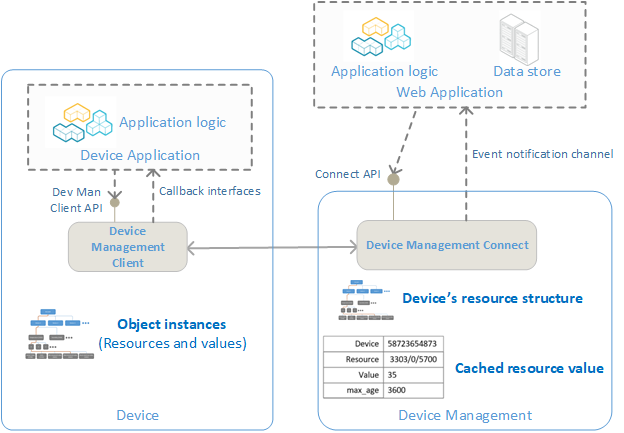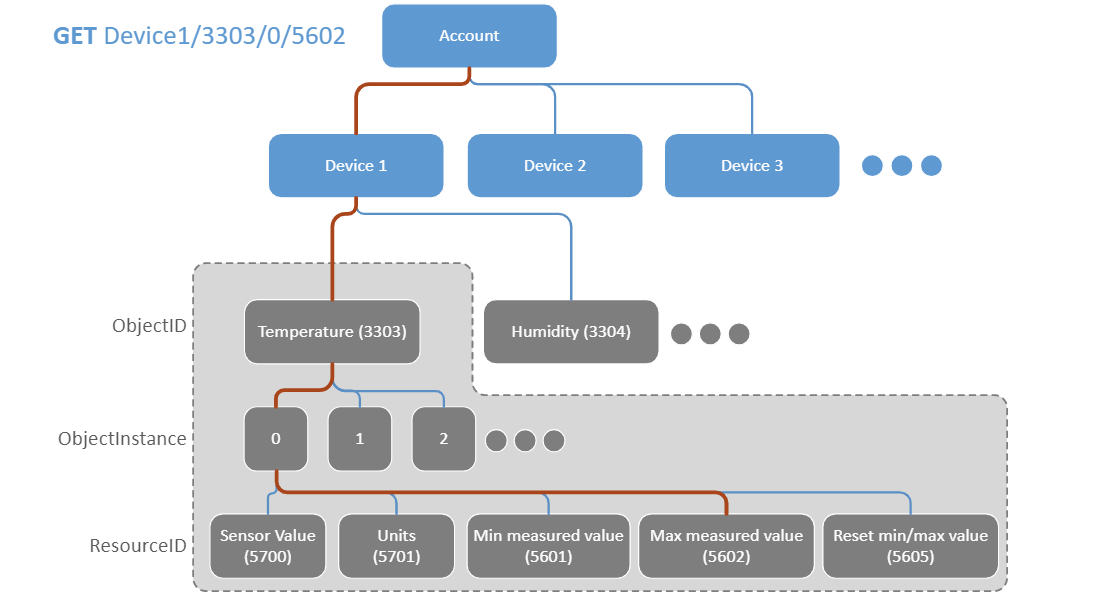Resource model
Device Management Connect relies on the LwM2M device handling logic. LwM2M has a hierarchical data structure representing the device information using Objects and Resources.
The device application creates and owns the resource structure:
- Object: An Object is collection of Resources in the device. It is an "interface" to a temperature sensor, for example.
- Object Instance: An Object can have multiple Instances.
- Resource: Any piece of information from a device is a Resource, which has either a static value (a value that never changes) or a Dynamic value (a value that changes during the device's operation). You can read, write to or execute a Resource's information. A Resource can also be an array with multiple values.
Resource ownership
The Resources are created and owned by the device application. Device Management Connect stores the structure of Resources for each device. The Resource values are cached for a certain time (lifetime) defined by the device application.

Object and Resource IDs
Objects and Resources have IDs, and some of the IDs are reserved for a particular use.
For example:
3is a device Object.5is a firmware Object.5700is the current measured value from the Resource's sensor.
You can find the predefined Object and Resource names on the Open Mobile Alliance website.
Sample data structure
Here is an example data structure, following the definition of the OMA:
- The device has two different Objects, a temperature sensor and a humidity sensor.
- The temperature sensor Object has five different Resources. You can read their values, reset their min/max values and change the unit value.
- The device has three Instances of a temperature sensor.
To read the max measured value from Instance 0, the web application needs to place a GET request to /v2/endpoints/device1/3303/0/5602.
